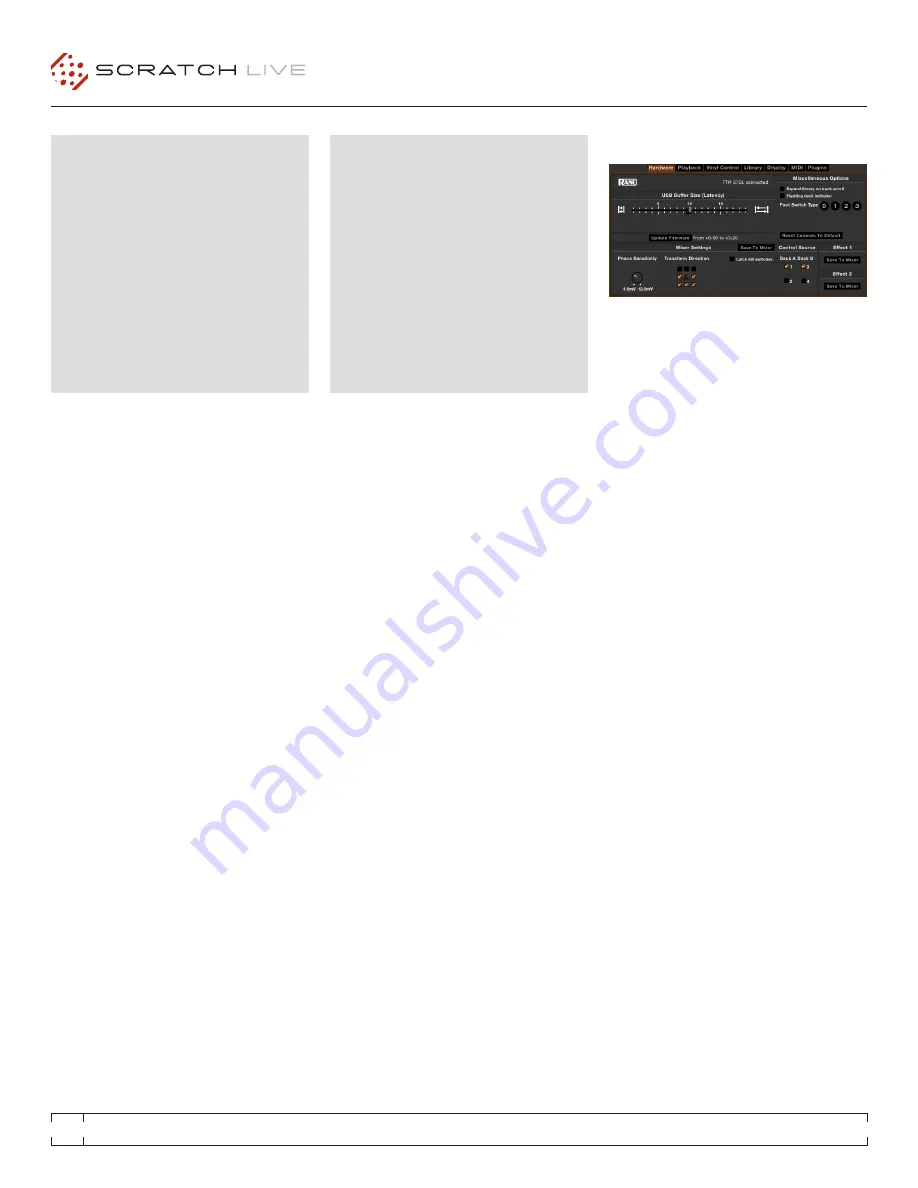
TTM 57SL
FOR
SERATO SCRATCH LIVE •
OPERATOR’S MANUAL
2.1
32
LIVEFEED
LiveFeed allows you to stream any of the
standard record sources (mix, aux, a pre, a
post, b pre, b post) to a Virtual Deck. You can
then instantly play the recording back just like
a normal audio file - you can scratch it, speed it
up, slow it down, set loops and set cue points.
There are two recording options, normal and
gated. The normal option means recording will
begin as soon as the Deck starts playing. The
gated option means recording will only begin
once the input source exceeds the set gate level
(thus avoiding periods of silence). You can set
the gate level by clicking the dropdown menu in
the LiveFeed filename. The lower the gain setting
the more sensitive the gate is.
The amount of time available to record is
determined by your audio cache setting. The
track overview display shows the amount of
usable audio you have to play with from the
recording. Click anywhere in the track overview
display to jump to your desired position in the
recording.
SEE “AUDIO CACHE” ON PAGE 36.
USING LIVEFEED
First locate the LiveFeed files in your library. Type
“livefeed” into the search box and you will see:
LiveFeed - Rane TTM 57SL Record Source
LiveFeed - Rane TTM 57SL Record Source (Gated).
Load the desired LiveFeed file to any Deck. To
begin recording, start the Virtual Deck playing.
The waveforms will start to build in the track
overview and main waveform display as the
input source is being recorded. Performing a
needle drop on the record brings the playhead
back to the “now” position in the audio stream.
ADDITIONAL SETUP
This section covers general preferences and
adjustments you can make to improve the
performance of Scratch Live. Click on
setup
to
get to this area.
hardWare
USB BUFFER SIzE (LATENCY)
Scratch Live processes audio in small chunks.
When smaller chunks are used, the movement
of the record is translated into audio more often,
which results in a lower overall system latency.
However, this requires more processing and
therefore a higher CPU load, so lower buffer size
settings require a more powerful computer to
produce uninterrupted audio. If you want tighter
control, you should try decreasing this setting,
on the other hand, if you experience audio
dropouts, you need to increase this setting (or
get a more powerful computer).
update fIrmWare
If a firmware update is available after installing a
new Scratch Live software release, an
Update
Firmware
button appears. The firmware
upgrade takes approximately 10 seconds,
during which time the mixer will not be usable.
If for any reason the firmware upgrade does not
work, just turn the mixer off and back on again.
It’s not possible to damage the mixer whilst
performing a firmware upgrade.
NOTE: Newer firmware may not work with
older versions of Scratch Live. The mixer
will still be usable with older Scratch Live
versions, but the effects do not display
parameter values onscreen so you will not be
able to see how the effects are configured.
You will have the same control over the
effects that you have when using effects
without Scratch Live connected.
If you are using a mixer that is not yours and
shared by other people please DON’T UPGRADE
their firmware without their permission. If you
don’t click on Firmware Update, the mixer will
















































